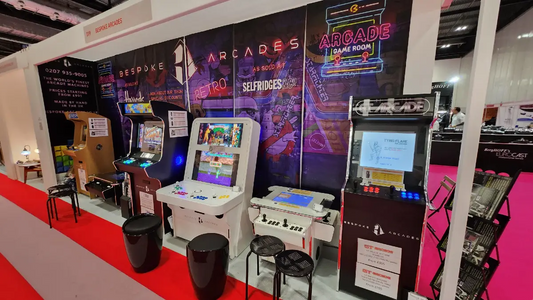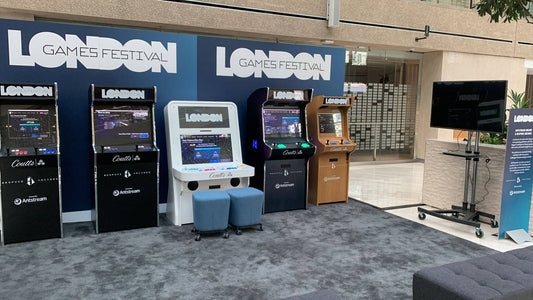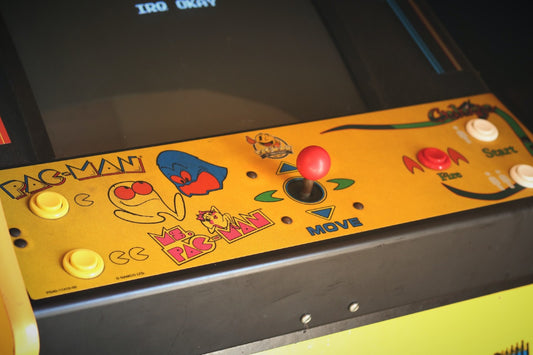Atari 2600 - Part 1
The Atari 2600, or Atari VCS (Video Computer System), stands proud as one of the longest running video game consoles, being an innovator of its time. The system started life as the Atari VCS, released in 1977. However, the history of the production for the console dates back to the early 70s.
In 1973, Atari purchased an engineering think tank company called Cyan Engineering, whose job was to research the next generation of video games. Over this period, Atari were working on a prototype home-console called Stella, which overtime developed into the VCS/2600. The original prototype would not even accept cartridges! Game cartridges were only implemented late into the prototypes life, when some members of the team saw a fake cartridge on another machine.
It can be argued that the success of the console grew overtime as they started to incorporate modern concepts into the system, however, the VCS provided an exciting new way to play at home that wasn’t Pong or a Pong clone, allowing it to fast gain some popularity within the market. With this system, Atari introduced the first video game to have a computer-controlled opponent, rather than the standard two-player. With modern home gaming now a reality, Pong clones were now rapidly decreasing in price due to high competition and because of this, the Atari VCS is seen as one of the reasons that Pong and Pong clones started to fall rapidly out of fashion.
The VCS was originally priced at $199, which would nowadays convert to around $777 (£581). Upon initial release, the console was packaged with two joystick controllers and a cartridge of the game Combat. Additionally, eight other game cartridges were on sale at the time of release. The console was also rebadged as ‘Sears Video Arcade’, and sold through Sears, Roebuck and Company stores. Within the year it was released (1977), 250,000 consoles were sold.
In the first year of production, the VCS was manufactured in California. It is possible to tell if you own one of these American-produced machines as they have a characteristic thick, plastic moulding covering the bottom and sides of the system. Due to their size, weight and early design of having all six switches on the front of the console, these were referred to as ‘Heavy Sixers’. After the production of the ‘Heavy Sixers’ in the first year of manufacture, the production of the console was moved to Japan where models were encased in a thinner plastic moulding.
Moving into 1978, the VCS and Atari started to show signs of declining business. In this year only 550,000 out of 800,000 systems were sold. This slow-down in sales had an effect on the funding within the company and resulting in Atari turning to Warner to cover all losses. Due to this, Nolan Bushnell (founder of Atari) went into retirement and left his position in the company.
Because of this dip in sales and morale throughout Atari, the company decided to re-market their product. The plan was hatched to drive up sales through an advertising campaign, reminding the public that the VCS presented the family with a versatile gaming experience, allowing for complex gaming – way beyond simple Pong and tennis games. Amazingly, this campaign worked and by 1979, the VCS was the best-selling console. It was also the best-selling Christmas gift of the year, and this is credited to the exclusive material on the console. The significant success of the VCS should not be understated when the sales figures were over 1 million units sold in that year.
The popularity of the VCS further grew when, in 1980, Atari licensed best-selling game of the time – Space Invaders. The introduction of a hit like Space Invaders has been said to double the previous year’s sales. Showing that Atari sold over 2 million VCS consoles in this year. To add to this, sales continued to grow rapidly over the next few years, statistics showing that sales doubled again over 1981 and 1982. Overall, by 1982 Atari had sold over 10 million units. Another factor towards contributing to the massive sales growth, is the introduction of the best-selling game Pac Man being ported onto the VCS. Pac Man was not only just ported into the VCS, but sold with the console, replacing Combat, and going on to sell an additional 7 million copies. Furthermore, the VCS was becoming even more cost-effective to produce, costing the company around $40 to make and each model selling for an RRP of $125 dollars.
Hi all, remember to keep up-to-date with our blog posts by following our Twitter or Facebook, or come back next week at the same time to read the second part of our Atari 2600 blog! Be sure to also check out our amazing custom, multi game arcade machines!



